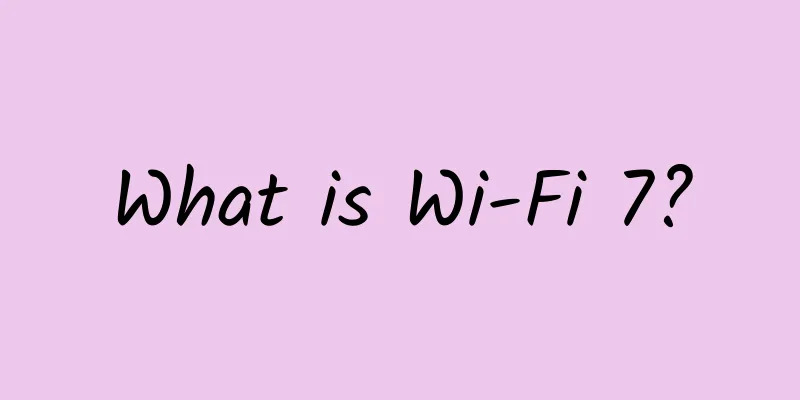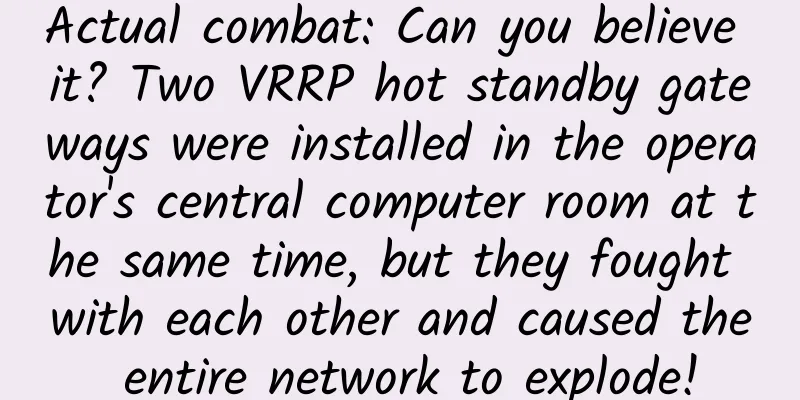"One arrow is easy to break, but ten arrows are hard to break" - From single link to MC-LAG

|
"It is easy to break one arrow, but difficult to break ten arrows." This is a proverb story that I often heard when I was a child. The literal meaning is that a single arrow is easily broken, but multiple arrows tied together are difficult to destroy. This tells us the importance of "unity and cooperation". In the field of bearing, this story also has a wonderful use. Let's take a look at it together~ Single link, one arrow can easily breakIn the early days of IP networking, two network devices (A and B) generally communicated by establishing a single link. Obviously, using a single link connection has the following drawbacks:
Even though a single link has obvious flaws, it can still meet the needs of the public in an era when network requirements were not high. As the scale of networks grows, a single link can no longer meet the bandwidth and reliability requirements of the network, so people came up with the idea of bundling multiple links like arrows. As a result, link aggregation technology came into being. Link Aggregation: Ten Arrows Can’t Be FailedLink aggregation "bundles" multiple links between two devices to form an aggregation group. The multiple links in the aggregation group can now be regarded as one logical link. At this point, the traffic between the two devices can be shared on each link in the aggregation group. So, what benefits can link aggregation bring to the network? Increased network bandwidthMultiple links between A and B are bundled into one logical link. The bandwidth of the bundled link is the sum of the bandwidths of all links. For example, there are three links between A and B for link aggregation, and the bandwidth of each link is 10 Gbps. Then the maximum bandwidth of this aggregation group can reach 30 Gpbs. Improved network connection reliabilityIf one link between A and B fails and is interrupted, the traffic will be automatically redistributed among the remaining links without causing traffic interruption between A and B. Implementing traffic load balancingLink aggregation can evenly distribute the traffic between A and B to all member links, minimizing the risk of traffic blocking the link generated by each member link. Avoid Layer 2 loopsWhen link aggregation is used between A and B, these links are no longer single links working independently, but become a logical link to the outside world. Therefore, even if STP (Spanning Tree Protocol) is not used, loops will not occur, effectively avoiding the risk of Layer 2 loops between A and B. Based on the above advantages, link aggregation has been widely used in IP networks. MC-LAG: A more reliable “bundle”With the advent of the mobile Internet era, the Internet has become increasingly closely integrated with our daily lives. While we enjoy the convenience of the Internet, it also brings about the interactive processing of massive amounts of data, which puts higher demands on the network's bandwidth and reliability. However, traditional link aggregation technology is limited to one-to-one link aggregation between two devices and cannot achieve link aggregation between one-to-many devices. Therefore, in order to provide a more reliable network, MC-LAG (Multi-Chassis Link Aggregation Group) was created. When an access device (which can be a server or switch) is connected to two upper-layer network devices A and B, the MC-LAG technology can be used to form a cross-device link aggregation group. The basic idea of MC-LAG is to allow two network devices A and B to perform link aggregation with the access device in the same state. From the access device's point of view, it is as if a link aggregation relationship has been established with the same network device. In this way, link aggregation technology is expanded from one-to-one device docking to being able to access two devices at the same time and form a dual-active system. Let’s take a look at how this active-active system works. MC-LAG working processBefore understanding the working process of MC-LAG, first learn some basic concepts involved in MC-LAG technology. DFS Group, or Dynamic Fabric Service Group, is mainly used to pair the two network devices (A and B in the figure) that make up MC-LAG and synchronize the interface status, table entries and other information of the two devices. In a DFS Group, the roles of devices A and B are differentiated as master and backup. Under normal circumstances, the master and backup devices forward service traffic at the same time. Peer-link is a direct Layer 2 link between two MC-LAG devices A and B, used for negotiation message exchange and partial traffic transmission. Keepalive is the heartbeat link between two MC-LAG devices. It carries heartbeat data packets and is mainly used to send dual-active detection messages between the active and standby devices to prevent dual-active devices A and B from being used as dual-active devices. MC-LAG member interfaces are interfaces on two network devices A and B that connect to access devices. After understanding the basic concepts of MC-LAG, we will further understand the process of establishing MC-LAG, which includes the following five steps.
After completing the above establishment process, MC-LAG can work normally. MC-LAG Traffic ForwardingMC-LAG is mainly used in dual-homing access scenarios, that is, the access-side device C uses the MC-LAG technology to access the network-side devices A and B. During normal operation, the upstream and downstream traffic is forwarded through devices A and B in a load-balancing manner. If the above network fails, how does MC-LAG protect the network from working normally? Member interface link failureIf a member interface of MC-LAG fails, for example, a member interface of device B fails. Access side device C senses the failure of the member interface of device B and sends all upstream traffic to device A, which forwards it. When device B receives traffic from the network side to device C on the access side, it will hand over the traffic to the normally functioning device A through the peer-link and forward it to device C on the access side. MC-LAG Device FailureIf an MC-LAG device fails, for example, device B fails, device B cannot forward traffic, and all traffic is forwarded by device A. Peer-link failureIf a peer-link failure occurs, devices A and B cannot forward traffic at the same time, otherwise it will cause a series of problems such as broadcast storms and MAC drift, so only one device is allowed to forward traffic. At this time, the backup device of MC-LAG (here is device B) will process all its physical interfaces except the peer-link interface and the management network port in Error-down mode. At this time, all traffic will only be forwarded by the MC-LAG master device. ConclusionFrom the previous introduction, we can see that MC-LAG technology has more advantages than traditional link aggregation technology. While enhancing network reliability, it simplifies networking and realizes device-level high-availability redundant protection and multi-path forwarding. In addition, the two network devices of MC-LAG run independently and can be upgraded separately. During the upgrade process, as long as one device is kept working normally, there will be almost no impact on the running business. Currently, MC-LAG technology is being widely used in new IP metropolitan area networks and cloud data centers. While adopting the Spine-Leaf network architecture, MC-LAG can be deployed to ensure network reliability. In the process of 5G evolution, MC-LAG technology will surely provide more reliable protection for IP bearer networks. |
<<: Let’s talk about how 5G applications can empower thousands of industries
>>: How these three benefits of SDN can help small businesses
Recommend
Does eSIM have a big impact on mobile network operators?
The number of cellular Internet of Things (IoT) c...
80VPS: Hong Kong KVM annual payment 330 yuan - dual core/2GB/40G hard disk/3M, Los Angeles large storage machine monthly payment 1200 yuan
80VPS has newly launched the Hong Kong CI data ce...
Four predictions for SD-WAN in 2018
2018 will be the year of WAN transformation, as r...
Is the future of the new WIFI standard 802.11ad reliable?
Now there is a new WIFI standard that can increas...
Say hello politely - TCP protocol three-way handshake
The Art of Communication What is the most basic a...
5G development has entered a critical period, and the following major applications are worth paying attention to in 2021
Since its official commercial launch in 2019, aft...
2021 Apps UP Competition | Huawei Chen Lifang: The stars will never fade, let’s walk hand in hand
[Beijing, June 10] The 2021 Huawei HMS Global App...
5G Imagination in the Internet of Vehicles Makes Transportation Smarter
[[351620]] 5G is one of the Internet of Things co...
Can 5G messaging become a moat for operators in the digital economy era?
The completion of the project of "5G Message...
Intelligent mining is an inevitable trend, and 5G commercialization has achieved remarkable results
At present, despite the rapid rise of new energy ...
If you think 5G technology is overhyped, wait for 5.5G to arrive
Less than half of UK 5G users say 5G offers impro...
Simplifying enterprise operations and maintenance: the right network automation strategy is key
[51CTO.com original article] From the development...
Verizon expands Ultra Wideband 5G and 5G Home Internet to new cities
Verizon, the US telecom operator, recently announ...
With the arrival of 5G, will enterprise-level networks disappear?
Reader Question: Although I am also in the IT ind...
PacificRack removed old packages and unilaterally raised renewal prices, offering 50% discount on new packages for the first month
I haven't shared information about PacificRac...









